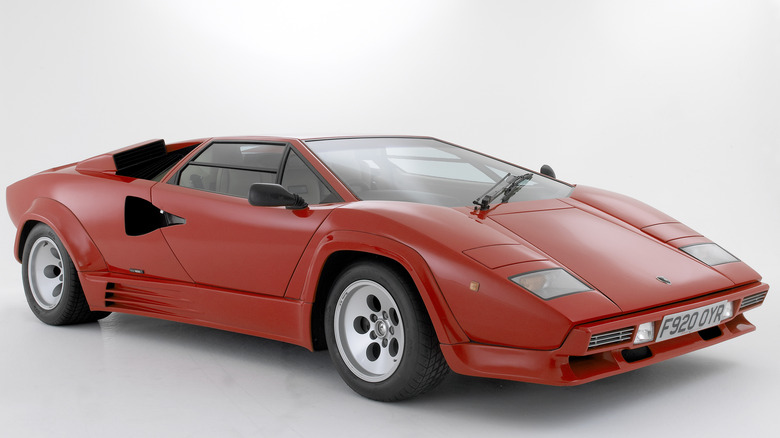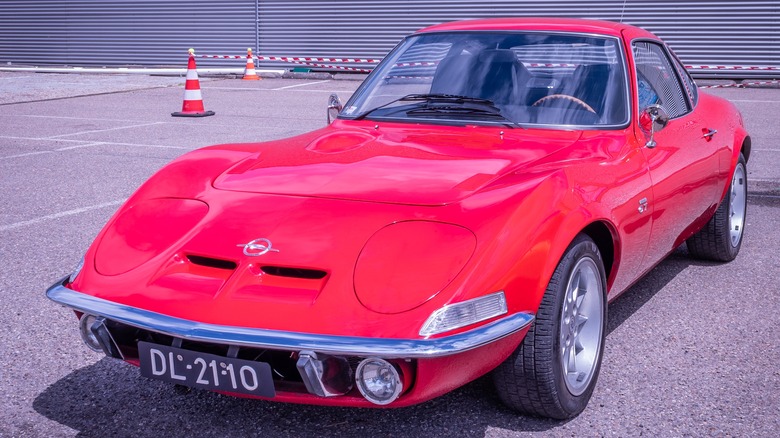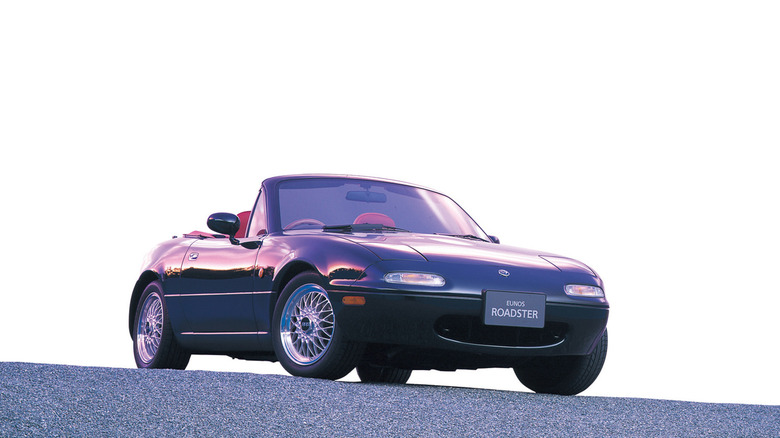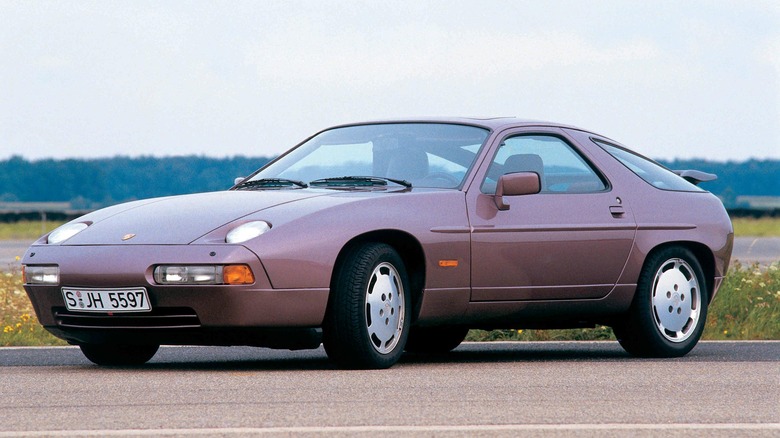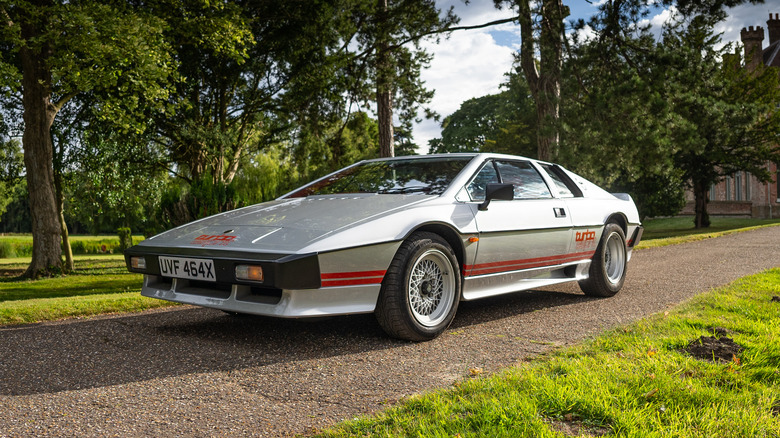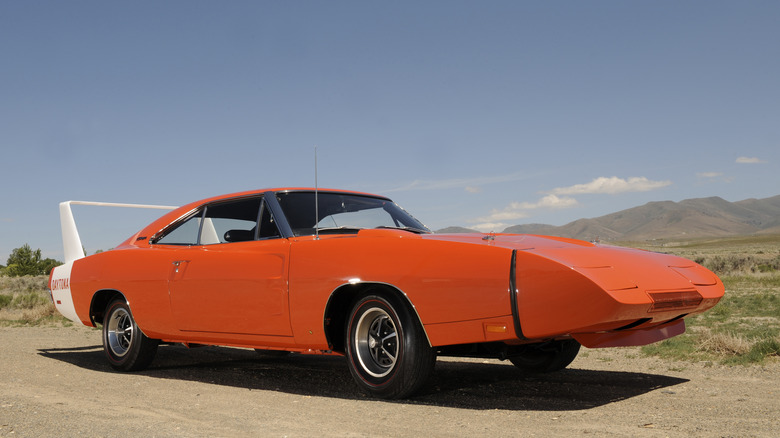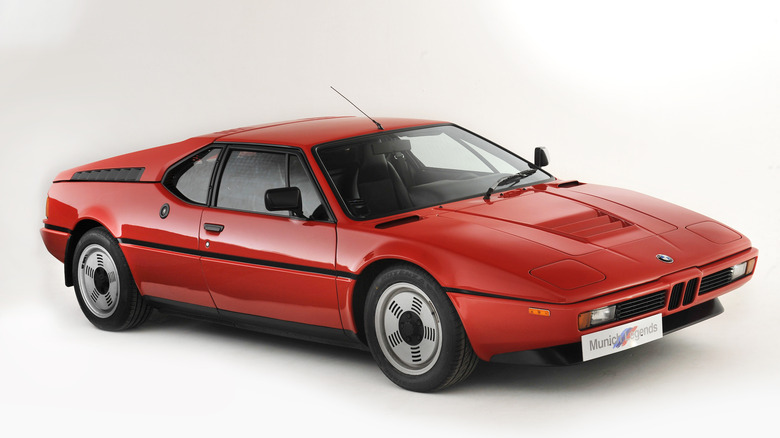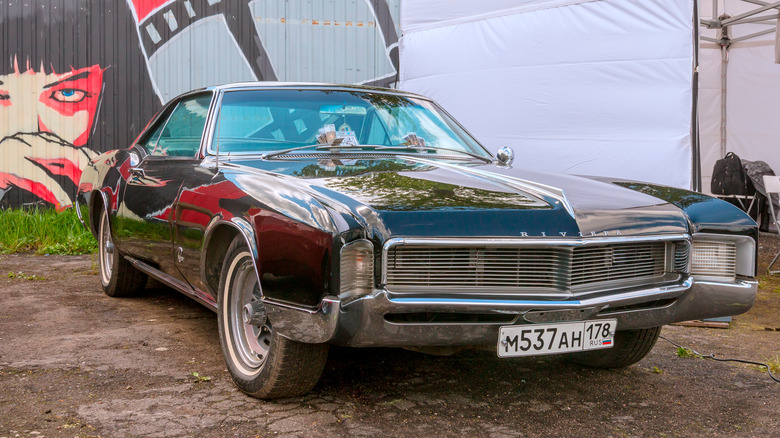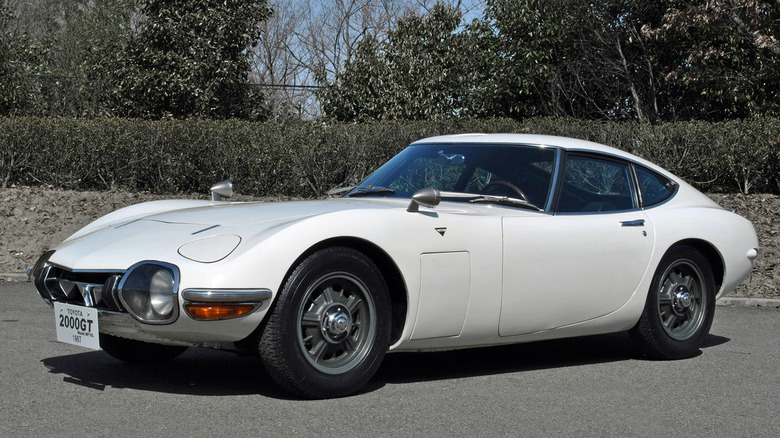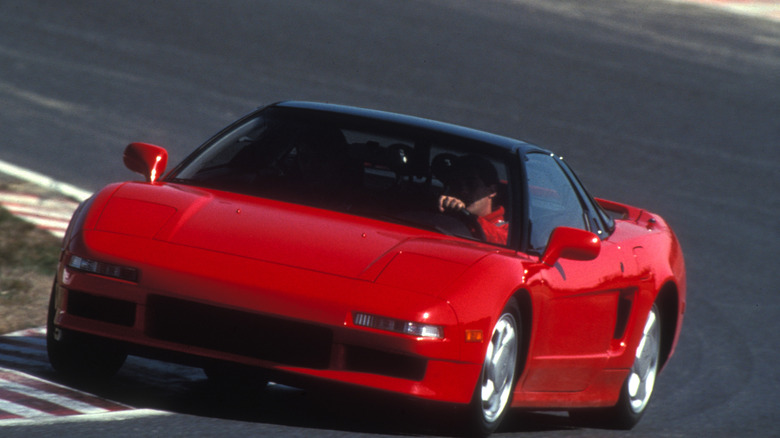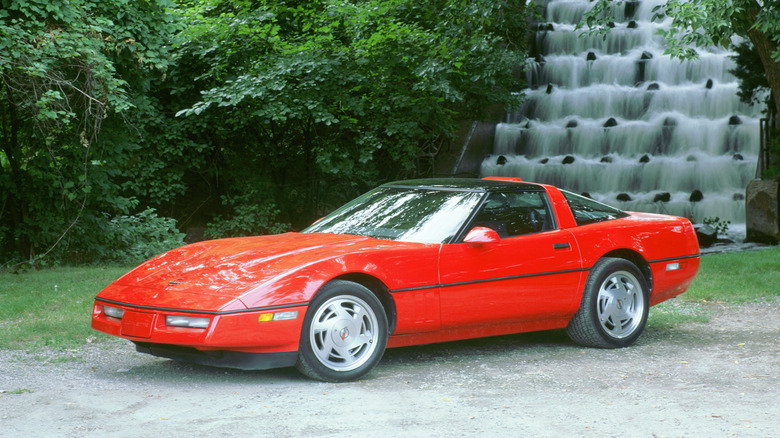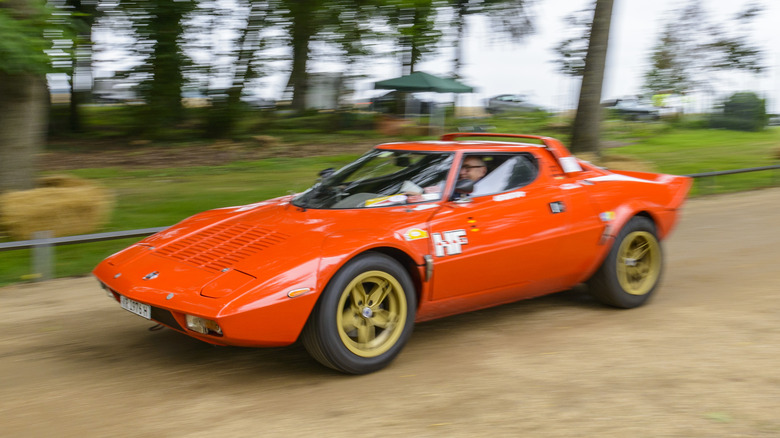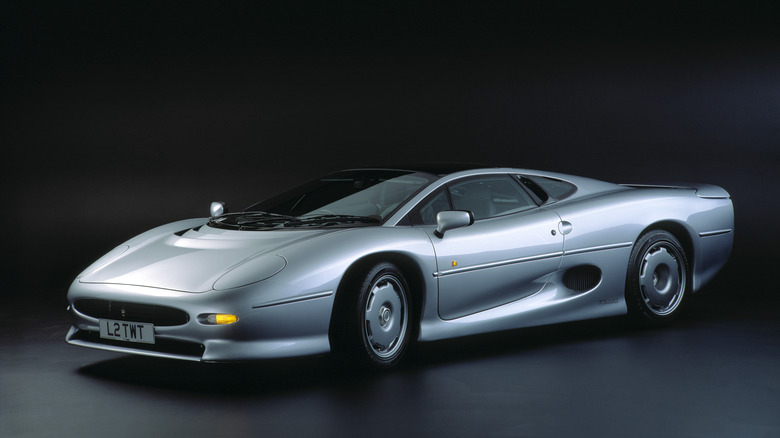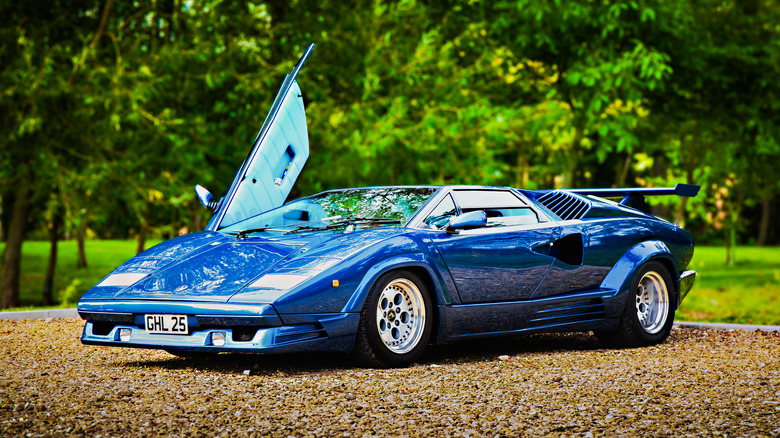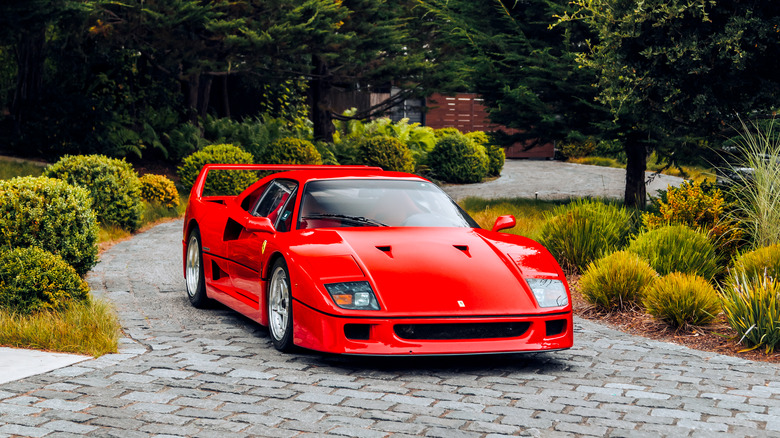The Coolest Cars With Pop-Up Headlights Ever Built, Ranked
Thanks to LEDs, today's car headlights provide excellent night visibility while allowing for ever-sleeker designs. However, I have always romanticized the era of pop-up headlights. It gave us some legendary cars that still wow enthusiasts today and, crucially, made cars look uber cool.
Pop-up headlights were developed as a way to differentiate a car's design. From the 1940s, every road car was equipped with the same sealed beam headlamps. These standardized headlights were easy to replace and available at every gas station, but they were also the reason why every car from that era had the same circular (later rectangular) headlights. Put simply, automakers were forced to use them until the introduction of the replaceable bulb headlight assembly.
However, some automotive engineers and designers thought of a genius idea to retain a car's unique aesthetic characteristics, while still using the standardized sealed beam headlamps — hide them when not in use. Starting in the 1960s, the coolest cars had pop-up headlights. You might argue that this revolution also led to cars looking similar, but I think the best examples were different enough.
I've seen my fair share of vehicles over the past few decades. In addition to studying engineering and motor vehicles at the University of Cyril and Methodius in Skopje, I have been researching, writing about, and reviewing cars for over 15 years — in that time, I've witnessed just about every sort of vehicle imaginable — including (but not limited to) those with pop-up headlights aplenty. In this piece, I'll give you my take on the coolest cars with pop-up headlights, models that still impress to this day. To make it more interesting, I limited the list to one car per brand, and ranked them from least cool to most cool.
14. Opel GT (1968 to 1973)
Drivable scale replicas of classic sports cars are quite an interesting concept, but they're also essentially toys for adults. However, in the past, GM produced a smaller replica of the Corvette sprinkled with German engineering. The swoopy Opel GT even launched before the Corvette C3 in 1965, featuring a similarly elegant yet futuristic design in a smaller footprint than GM's flagship sports car. It was not an exact replica of the Vette, but the GT remained an attractive car.
The centerpiece of the Opel GT's design was the pop-up headlights, which were operated by a lever and opened up sideways. They looked quite cool for the era, especially since the GT was not a flagship car by any stretch of the imagination. Equipped with either a 1.1-liter engine producing 67 hp or a 1.9-liter unit producing 102 hp, the Opel GT was also not very powerful. Fortunately, it was very light, tipping the scales at 2,072 pounds, allowing it to reach a reasonable 115 mph with the more powerful engine. Or, you could reach north of 40 mpg if you opted for the smaller engine!
13. Mazda MX-5 Miata NA (1989 to 1997)
The first-gen MX-5 Miata NA wasn't the first cheap, fun-to-drive sports car with a front-engine, rear-wheel-drive configuration — nowhere close, in fact. Even Toyota had launched a mid-engine sports car in 1984 with the excellent MR2. Unlike its rivals, though, the MX-5 Miata provided a recipe for happiness that still works today.
The original MX-5 Miata NA remains the coolest of the bunch with its front pop-up headlights, which gave the car two personalities. With the headlights retracted, the MX-5 Miata NA had that classic sports car shape, but with the headlights up, it looked quite cute. These charming looks even started the trendy "winking headlights" phenomenon, an aftermarket upgrade that allowed only one headlight to pop up.
Still, the MX-5 Miata NA was even more fun to drive than to look at. With its light and balanced chassis, inspired by the Lotus Elan, free-revving naturally aspirated 1.6-liter engine, sharp steering, and precise manual transmission, the MX-5 Miata NA was a blast to drive. Crucially, it was cheap and attainable for most enthusiasts, which makes it even cooler in my eyes. It's why the MX-5 Miata NA is on this list instead of the RX-7 FD, though Mazda's rotary sports car is amazing in its own right.
12. Porsche 928 (1978 to 1995)
The 911 is Porsche's flagship sports car and the model that people most closely associate with the brand. However, in 1978 Porsche launched a V8-powered front-engine, rear-wheel-drive grand-touring machine that should have been the brand's new flagship car. It was a breath of fresh air for the German company, though not enough to dethrone the 911 as the company's crown jewel. You can blame Porsche purists who preferred air-cooled boxer engines, because the 928 was an excellent car and easily the most underrated Porsche of all time.
What has always impressed me about the 928 is that Porsche didn't copy anybody. The 928 had pop-up headlights, but they were not hidden when not in use — just laying down. It made the front end more elegant, breaking the negative space. The rest of the body was also very streamlined and classy, while the interior was futuristic and highly luxurious. The best part: You could achieve dizzying speeds in the 928, with the 350-hp, 5.4-liter GTS model reaching 60 mph in just 5.3 seconds and a top speed of 171 mph!
11. Lotus Esprit (1976 to 2002)
The first time I remember seeing the pop-up headlights of the Lotus Esprit was watching the James Bond movie "The Spy Who Loved Me." With its sharp, wedge-like profile and sleek front end that influenced a whole generation of supercars, the Esprit impressed me so much that it was also one of the first diecast model cars I bought. Even today, the first three generations (S1, S2, and S3) remain some of the coolest-looking sports cars. Hardly surprising, as the Esprit concept was designed by Giorgetto Giugiaro.
Of the bunch, the 1981 Esprit Turbo stands out as the most aggressive, with an aerodynamic kit that greatly enhanced the looks of Lotus' mid-engine sports car. Moreover, it was much quicker than before, thanks to the new 2.2-liter inline-four turbocharged engine, which allowed it to reach 60 mph in 5.7 seconds.
Crucially, the S3 generation Esprit Turbo was improved in the driving dynamics department, with agile handling and excellent stability. Lotus continued to improve the Esprit for two subsequent generations, X180 and S4, which had a more rounded but still very futuristic design. The S4 even received a 3.5-liter V8 engine, producing 350 hp!
10. Dodge Charger Daytona (1969)
The Dodge Charger Daytona remains one of the wildest-looking road-going sports cars ever, with a huge rear wing and a keen front "nose cone" end with pop-up headlights. However, this was not Dodge designers having a fun day at work. It was a result of the engineering team trying to win NASCAR races, though the more aerodynamically efficient design would eventually get the Charger Daytona banned from racing.
Dodge built only 503 examples of its race-bred muscle car, purely for homologation purposes. The brand wasn't very successful in the 1968 edition of the NASCAR championship, but with this new design, it won two races in 1969 and four in 1970. It was all thanks to the body kit, which cut the aerodynamic drag by 15%, thus allowing the Charger Daytona to reach north of 200 mph without significant engine tuning.
Although Daytona's design is its eye-grabbing feature, the 7.0-liter HEMI V8 it hid under the hood deserves equal attention. Equipped with two carburetors, it produced 430 hp and sounded like the engine of your dreams. Amusingly, Dodge paired it with a three-speed automatic, which was a more popular transmission, but fortunately, there was also a four-speed manual option.
9. BMW M1 (1978 to 1981)
Almost 50 years after BMW showcased the first concept, the M1 remains the brand's most mythical car. Designed mainly to race in the Manufacturers Championship in the 1970s, the M1 is also the company's only supercar in its history and the most significant M car ever produced. Moreover, with its mid-engine configuration, 277-hp 3.5-liter inline-six, and five-speed gearbox, the M1 was a true driver's car, able to reach 62 mph in 5.9 seconds and a top speed of 163 mph.
You might be thinking that it looks a lot like a Lamborghini, and you'd be right — BMW actually collaborated with Lamborghini on creating the M1. In fact, the Italian supercar company was tasked with building 400 M1 racecars for Group 4 racing, but because of financial problems, BMW had to later go with Neerpasch as a manufacturing partner.
Unfortunately, the M1 failed in racing because of its underpowered engine. On the bright side, it remains the coolest BMW to date, with a futuristic wedge-shaped body and a very sharp front end. The pop-up headlights only added to its appeal, making it a true classic today.
8. Buick Riviera (1966 to 1970)
Unlike most cars on this list, the second-gen Buick Riviera's pop-up headlights weren't built for aerodynamics at all. They were pieces of automotive art showcasing what is possible when designers and engineers gel together. The headlights looked like part of the grille when not in use, only to slide out when turned on. In a sense, they are not "pop-up" headlights at all, but that doesn't make them any less classy in my eyes.
Besides, the mechanism that allowed for these slide-out headlights was quite ingenious. They featured an L-shaped assembly with two legs, one of which moved the twin sealed beam headlamps while the other carried a part of the grille. As a result, the grille aligned perfectly together when powered off, hiding the headlights more successfully than perhaps any other vehicle with pop-up headlights.
What's more, the Riviera was an excellent luxury car. Initially, Buick planned to build it on a front-wheel-drive platform, but due to bad ride and handling, engineers fortunately opted for rear-wheel drive and a 7.0-liter V8 producing 360 hp, adding further points to the Riviera's chic index.
7. Toyota 2000GT (1967 to 1969)
Toyota had its fair share of legendary cars with pop-up headlights, like the AE86, MR2, and Supra. However, none of those come close to the coolness of the super-limited 2000 GT — this was Japan's first-ever supercar. With its beautifully styled iconic body shape, fantastic interior, and exotic parts like magnesium alloy wheels, the Toyota 2000GT is pure automotive excellence. It was so exquisite that a convertible 2000GT one-off was the only Japanese car to ever feature in a James Bond movie ("You Only Live Twice").
Toyota broke the 72-hour world speed record with the 2000GT in 1967, achieving an average pace of 128.76 mph. Along the way, numerous other distance and time records were broken, showcasing the car's reliability. It was all made possible thanks to a small 2.0-liter inline-six engine sourced from the Toyota Crown but reworked with the help of Yamaha to produce 150 hp. The engine was paired to a five-speed manual, driving only the rear wheels. As a result, this timeless-looking Japanese icon reached 62 mph in 8.6 seconds and a top speed of 136 mph; not bad for a 2.0-liter car!
6. Honda/Acura NSX (1990 to 2002)
I was not sure whether to put the Honda NSX in front of the Toyota 2000GT, but in the end, the JDM car that perfected the supercar formula won. When the NSX came out, it came out of nowhere. Sure, the media knew Honda was working on a sports car to showcase the brand's engineering prowess, but a Ferrari 328 GTB competitor? Nobody was expecting that.
Yet, in 1989 Honda (Acura in North America) shocked the world with an exotic, mid-engine supercar called the NSX (New Sports Experimental). The futuristic, yet timeless design that emphasized the mid-engine configuration quickly caught the attention of the public, but the NSX was much more than just a cool-looking automobile. It was a driver's car, first and foremost, designed to beat the competition in performance and satisfaction.
The NSX was advanced, too, being the first car ever with a light and stiff all-aluminum monocoque. Propelling the legend was a 3.0-liter V6 producing 276 hp, paired with a five-speed manual that sent the power to the rear wheels, later replaced by a 3.2-liter unit. Regardless of the engine, the NSX was a hoot to drive, with agile handling, a sonorous engine, and a precise shifter that created a unique experience.
5. Chevrolet Corvette C4 (1984 to 1996)
The Corvette was an established pop-up headlight nameplate well before the C4 generation arrived, with the C2 and C3 also hiding their front headlamps. For me, though, the Corvette C4 wore them best; it might not be as curvaceous as its predecessors, but the simpler lines made its design even more muscular. It's how a front-engine, rear-wheel-drive sports car should look.
Crucially, the Corvette C4 had the numbers to back up the more masculine design. Initially, it was offered with the same small-block L83 V8 as the C3, but Chevy quickly made it better with the 5.7-liter L98 V8, producing up to 350 hp in later model years. As always, though, the star of the show was the ZR-1 model. This high-performance variant hid a new LT5 5.7-liter V8 producing 380 hp, propelling the Vette ZR-1 to 60 mph in just 4.5 seconds. In 1990, this was rocket-fast! Oh, and it was great in the corners, too, while remaining compliant on rough roads thanks to the FX3 Selective Ride Control suspension. A true American showcase of performance and style.
4. Lancia Stratos HF Stradale (1973 to 1978)
The Lancia Stratos HF Stradale isn't just one of the wildest-looking sports cars ever — it's also one of the most intense homologation specials ever made. It's a car that only Lancia could make, and its super-futuristic design penned by Marcello Gandini still demands attention to this day. The Stratos body is bustling with so much action that the pop-up headlights are perhaps the tamest part. But it all works together amazingly well — I could look at it for hours.
However, the styling is only a part of the story. The Stratos was a purpose-built homologation car designed to rally, winning the world championship in 1974, 1975, and 1976. It also had a Ferrari-sourced V6 in the middle for better driving dynamics and weighed just 2,161 pounds. Sure, the engine made only 190 hp, but in that light of a body, it was enough for a 0-60 mph time of 6 seconds. Lancia only made 492 road-going examples of this space-age beauty, but the model's influence on the industry is perhaps infinite.
3. Jaguar XJ220 (1992 to 1994)
The Jaguar XJ220 does not have the recognition of other supercars of its era like the Ferrari F40 or Porsche 959, but it's undoubtedly one of the most beautiful ever made. Born from the brand's desire to compete in the FIA Group B championship, the XJ220 featured an elegant design with a long-tail rear deck, similar to a Le Mans racecar. Meanwhile, the special covers for the headlights emphasized the car's aerodynamic efficiency.
The road-going XJ220 was tasked with fulfilling some wild requirements. Notably, it should've had a 220-mph top speed, hence the name, but also AWD, rear-wheel steering, and a 3,000-pound downforce at its maximum velocity. The engine tasked with powering the beast was a 6.2-liter V12. Unfortunately, the production XJ220 had a twin-turbo V6 that drove only the rear wheels via a six-speed manual.
Even so, the 3.5-liter unit was a powerhouse, producing 542 hp and 475 lb-ft of torque, enough for a 0-60 mph sprint of just 3.6 seconds and a top speed of 217 mph. Amazing numbers for the era, but not enough to convince buyers — Jaguar sold only 282 units of the planned 350, mainly because customers were dissatisfied with the changes made to the initial V12 AWD concept.
2. Lamborghini Countach (1974 to 1990)
The Lamborghini Miura is arguably the most beautiful car ever made, with a timeless, curvaceous design that oozes elegance from every corner. However, despite it having pop-up headlights, for me, the Countach takes the cake when it comes to coolness. It's the polar opposite of the Miura, with a brash, almost rude design that makes all other supercars of its era look docile. Countach's space-age look best showcases Marcello Gandini's bold design principles. Yup, that's the same guy who penned the wild Lancia Stratos, and is arguably the reason why most other supercars have a wedge shape.
Like the Stratos, the Countach also had quite a lot to offer behind the wheel. From the get-go it came with a naturally aspirated 4.0-liter V12 that produced 370 hp, but power and capacity rose through the years to 5.2 liters and 449 hp. The latest engine brought the Countach to 62 mph in 4.5 seconds and up to a 185 mph top speed — fitting numbers for such a radical-looking supercar.
The wildest raging bull would have had everything it needed to be the coolest car with pop-up headlights, if not for a certain prancing horse.
1. Ferrari F40 (1987 to 1992)
I guess it's only fitting to finish this list with the Ferrari F40. It might not be the most attractive supercar ever made, but the F40 has no match when it comes to driving involvement. Despite costing a fortune, the F40 didn't care about making you comfortable. Its interior was more spartan than in a kit car, with no sound deadening to be speak of. In short, it was the closest thing to a road-going race car that the auto industry ever conceived.
Yet, in an era when cars are becoming ever more digital, this approach is more tantalizing than ever. Just you and the car! Behind you, a 2.9-liter twin-turbo V8 producing 471 hp @7,000 rpm and 426 lb-ft of torque @4,000 rpm, and in your hand, a five-speed manual. Be skillful enough to put the immense torque to the ground, and 60 mph will arrive in 3.8 seconds. Be brave enough, and you could see the needle touching 201 mph. Do this, and you will be on the path to achieving driving nirvana while working hard to keep the featherlight F40 (2,425 pounds) in check. Need any more reasons why the F40 is the coolest car with pop-up headlights?
